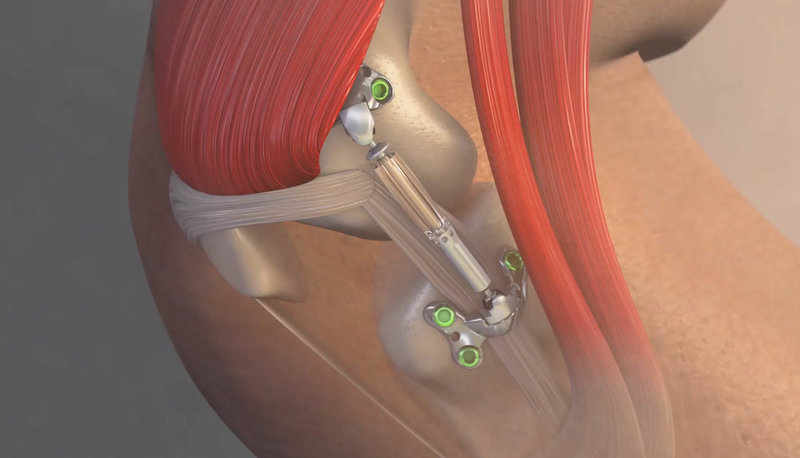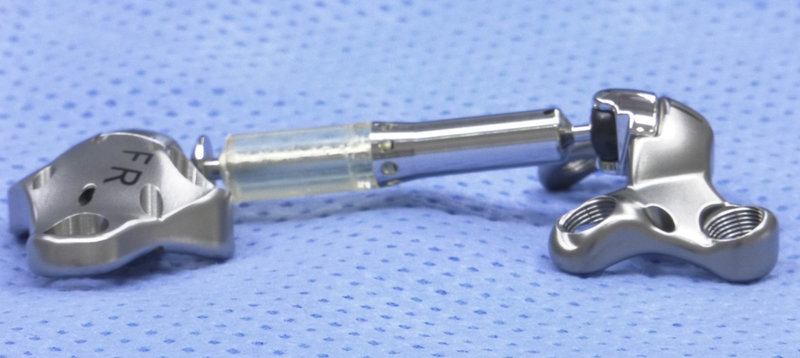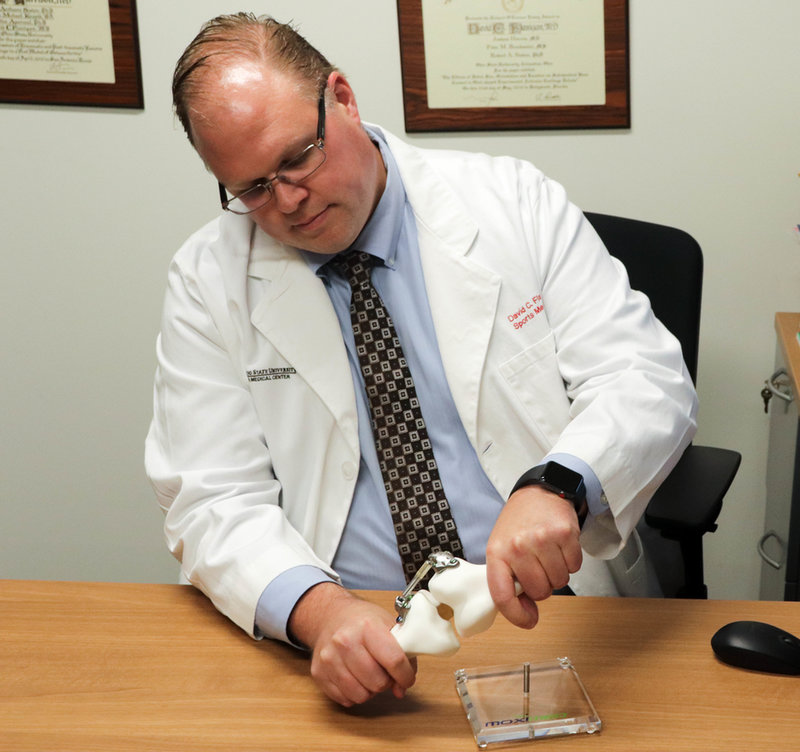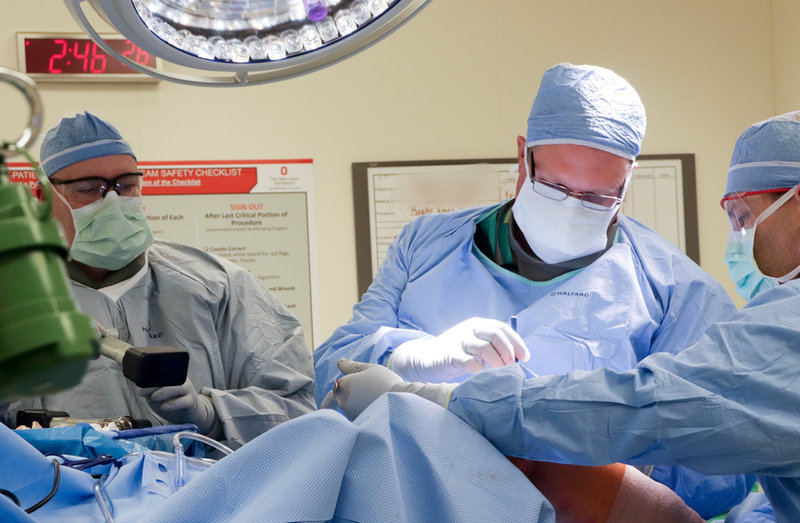Orthopaedics
Calypso Knee System: cutting down on knee replacements
Surgeons at the Ohio State University Wexner Medical Center have performed the first-ever surgery using the Calypso Knee System developed by Moximed. The device acts as a shock absorber for the knee and creates a cushion similar to cartilage in a healthy knee joint. It’s an innovation that’s intended to delay or even prevent the need for major knee replacement surgery, but how does it work? Charlotte Edwards finds out.

All images courtesy of Moximed

Osteoarthritis, the most common type of arthritis in the UK, is a long term condition which causes joints to become painful and stiff. Surgeons at the Ohio State University (OSU) Wexner Medical Center have performed the first surgery in the US which involved implanting The Calypso Knee System. The device, developed by osteoarthritis specialist company Moximed, has been designed to relieve knee pain and help patients with osteoarthritis delay or avoid the need for knee replacement surgery.

Implantation of the Calypso device requires a surgeon to create a four to five-inch incision in a patient’s knee and then place the device on the outside of the knee joint. The design of the device is said to support the outside of the knee joint without the need to alternate the anatomy or remove any tissue from a patient’s knee.

Dr David Flanigan, director of the Cartilage Restoration Program at OSU and one of the lead researchers of the Calypso clinical trial, was the orthopaedic surgeon who performed this world-first surgery. He said: “It works like a shock absorber to take pressure off the inside of the knee while creating a cushion similar to what cartilage provides in a healthy joint. The hope is that it increases joint functionality, reduces pain and delays a total knee arthroplasty for years or even decades.”

The trial is expected to enrol 80 patients across four sites and Flanigan is seeking patients who have mild to moderate osteoarthritis in their inner knee. Some other participant requirements include the age range of 25 to 65 and a weight of less than 300lbs.

Retired fire-fighter Chuck Stenger was the first clinical trial patient to receive the Calypso. He said to no longer feel persistent pain on the inside of his knee and would recommend the Calypso to other osteoarthritis patients once the device becomes available.
If the trial is successful then Dr Flanigan expects that the Calypso Knee System will soon become available to US patients. More than 700,000 knee replacement surgeries are performed every year in the US, a number which is continuously growing. The OSU believe that the Calypso could be the device to aid in reversing this trend, subsequently helping patients to avoid joint replacements by preserving their knees.